At the start of the week the students spent the morning in their three groups heading back out to the MFB (Main Fish Beds) with their geology professors to Areas 3, 6, and 6A. During the afternoon, Dr. Greg Henkes gave a lecture on carbon, oxygen and nitrogen isotopes, which can be used to both date and reconstruct environmental factors. Some of the common dating methods include radiocarbon dating, using the isotope carbon-14, which decays at a constant rate and can give an estimate of when an organism died based on the amount of carbon left. Oxygen isotopes, on the other hand, can be used to reconstruct changes in paleoclimates given their fractionation at different water temperatures, and their following intake into carbonate mollusk shells.
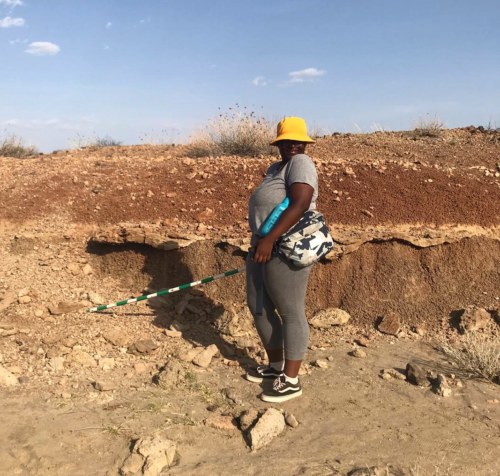
Latay Moultrie among the MFB (Main Fish Beds) Photo: Isabelle Loop
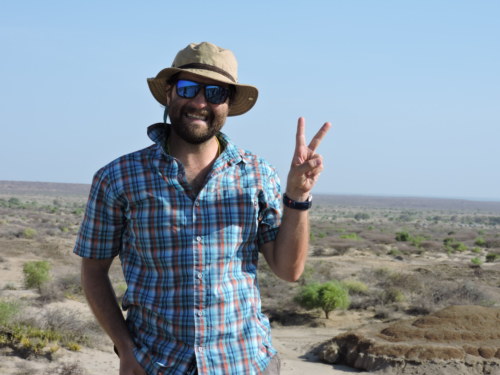
Dr. Greg Henkes! Photo: Petra Peretin
The students also walked out to Area 1, and along the way identified a particular type of sedimentary structure known as tuff. Tuffs are intriguing geological occurrences that form when a volcano erupts and its ash gets deposited and consolidated. Their particular chemical structure can be analyzed to obtain a date, which is why they are so important for paleontological work. Some of the best well-known tuffs within the Koobi Fora Formation include then KBS tuff dating back to approximately 1.8 Ma and the Chari tuff dating back to approximately 1.3 Ma.
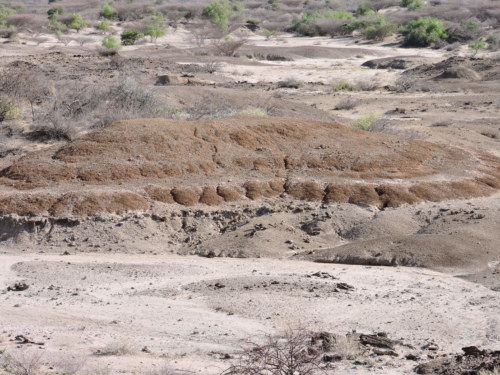
The fish beds in Area 1. Photo: Petra Peretin
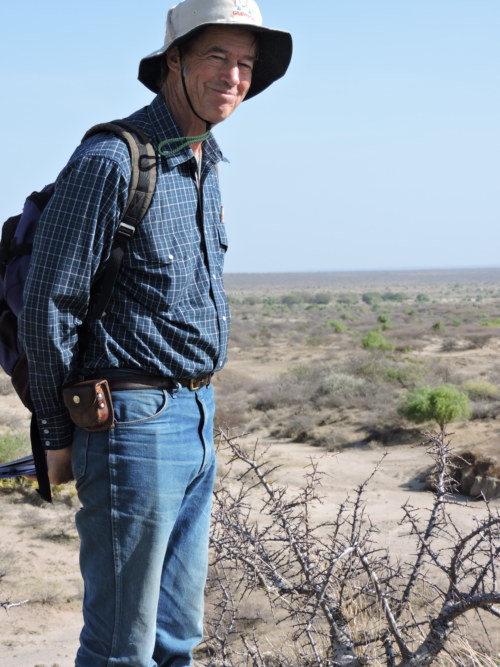
Dr. Bob Raynolds! Photo: Petra Peretin
It was also in Area 1 where the students were given the exercise to map transects using a Brunton compass, Jacob’s Staff, and the help of their teammates. This included making drawings and measurements of the thickness of each sedimentary layer. Later that day, the students later gave presentations on their MFB projects discussing the data that they had gathered while out in their area and several testable hypotheses they had formed based on what they were able to observe while in the field. Dr. Bob Raynolds gave a short lecture on using Google Earth in terms of geological mapping techniques and compiling the important finds and locations on a single data set and making it available to any researcher.
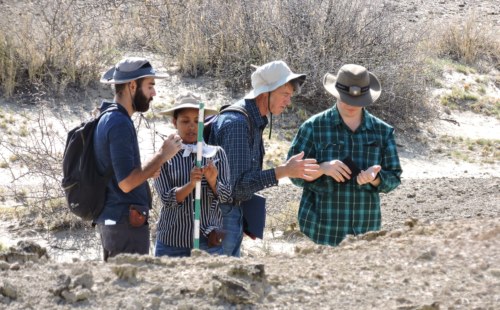
The students mapping transects in Area 1 with Dr. Bob Raynolds! (From left to right: Alexander, Friyat, Dr. Bob Raynolds, Denis) Photo: Petra Peretin
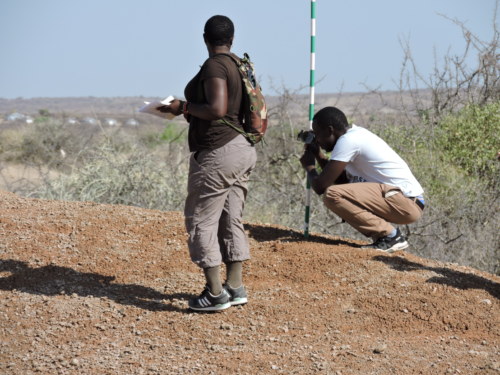
Everlyne (left) and Benjamin (right) mapping transects in Area 1! Photo: Petra Peretin
The following few days were spent camping in Area 40! Early Wednesday morning, on our way to the campsite, we ventured out to Area 10, also known as the famous location where the Paranthropus skull KNMER-406 was discovered. This time the students were not on the hunt for our early hominin ancestors but rather to identify tuffs in the field. We made our way to a nearby dried up riverbed where the students were given an impromptu minerals and rocks quiz. They were given a set amount of time to scower the nearby area and collect examples of minerals such as quartz and feldspar, metamorphic rocks such as gneiss, and igneous rocks such as basalt and ignimbrite. We spent the following day taking geology hikes during which they were able to see the Gombe basalts, as well as a nearby archaeological site known for the oldest Oldawan stone tools on the East side of Lake Turkana dating back to 1.95 Ma! Evidence arising from this site has also provided the oldest evidence of the inclusion of aquatic resources, such as fish and crocodiles, into the diet of early hominins.
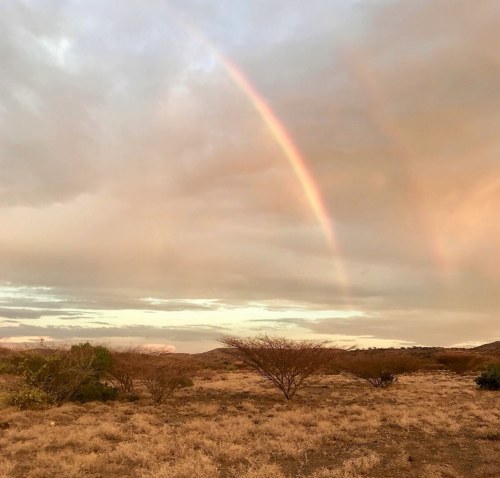
A beautiful rainbow, seen on our hike back to the campsite! Photo: Isabelle Loop
Before heading back to the Illeret campus we headed north to check out a few last minute geological wonders just several kilometers away from the Ethiopian border! The students spent the rest of Friday studying and reviewing for their geology test that took place on Saturday morning, bringing their geology module to an end. As the geologists, Dr. Craig Feibel, Dr. Bob Raynolds, and Dr. Greg Henkes departed, our next professor arrived. Dr. Mikael Fortelius, a researcher at the University of Helsinki, will be leading the next module, Vertebrate Paleontology. We took Sunday to relax and take a swim in Lake Turkana to unwind before the start of the paleontology course beginning on Monday.
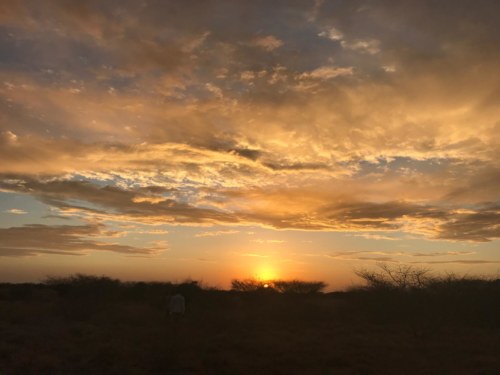
The sun setting in Area 40. Photo: Isabelle Loop





